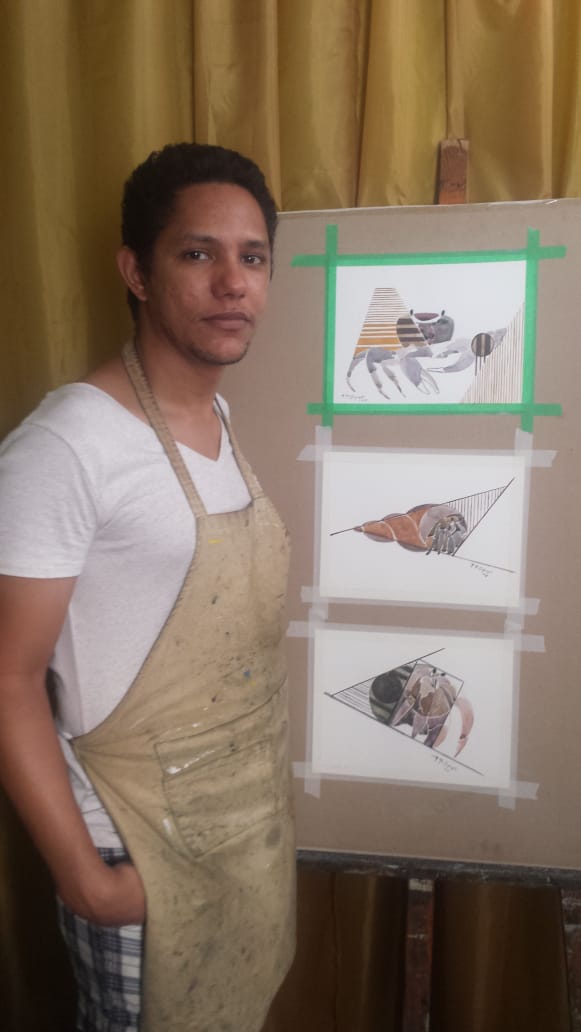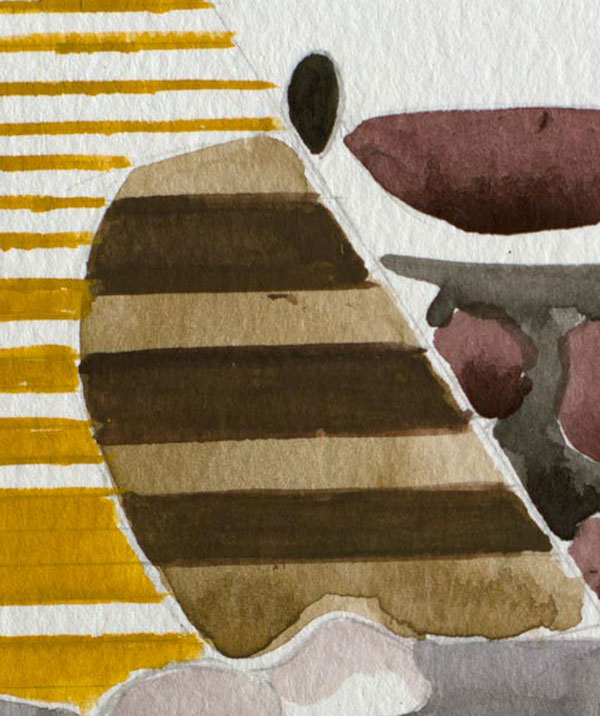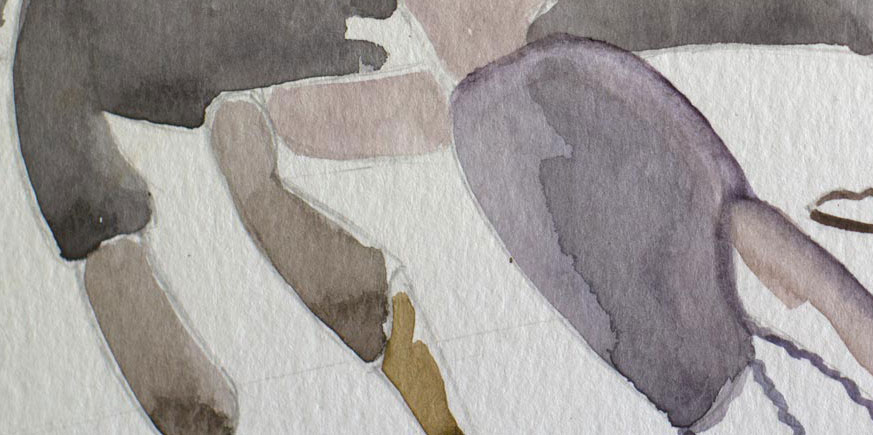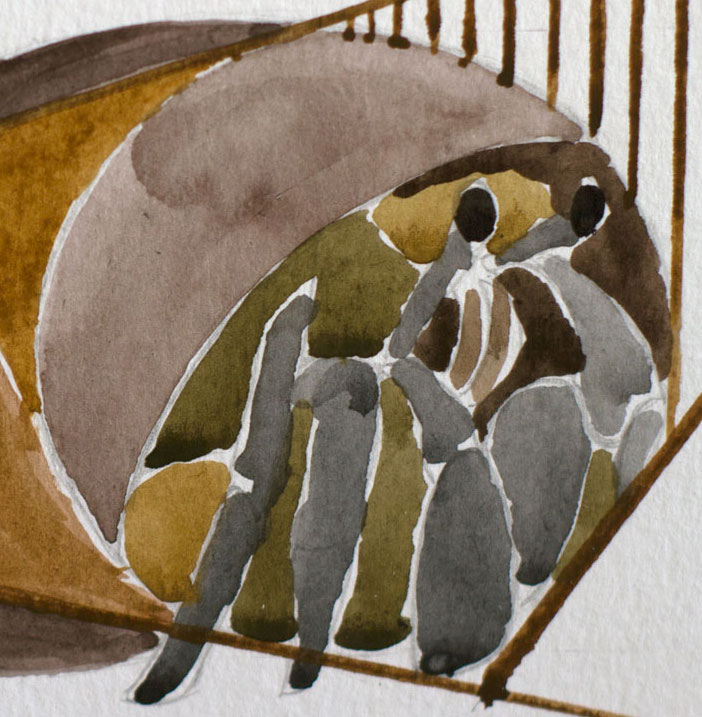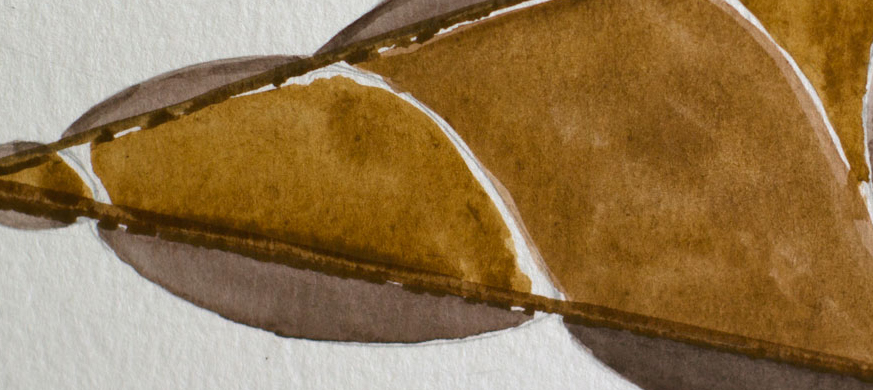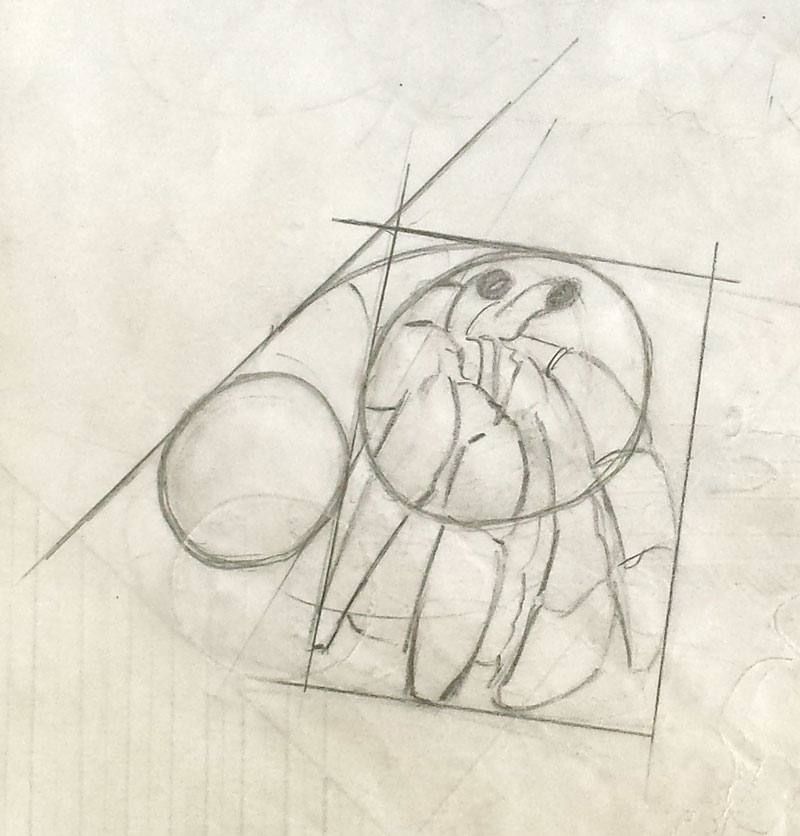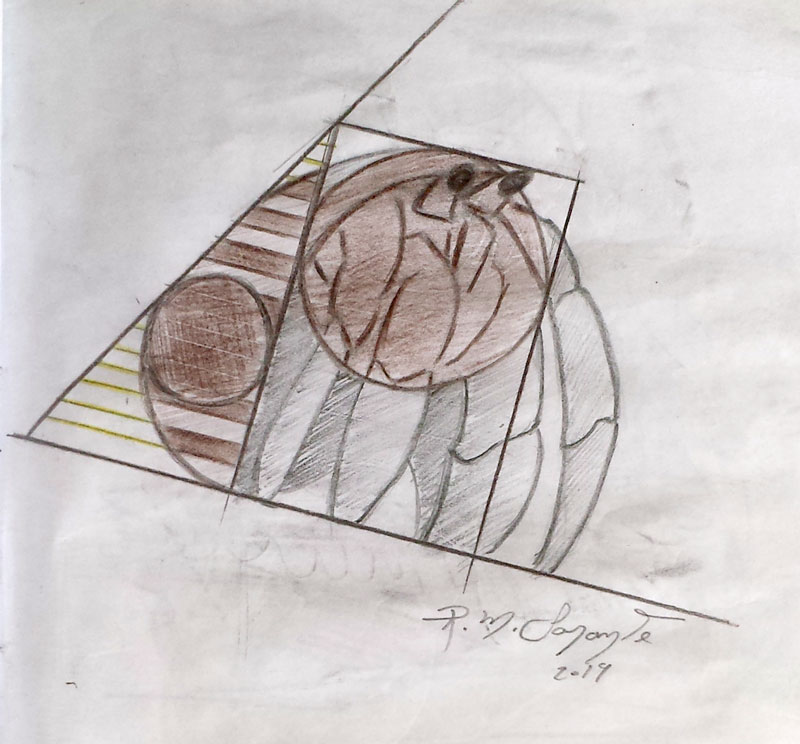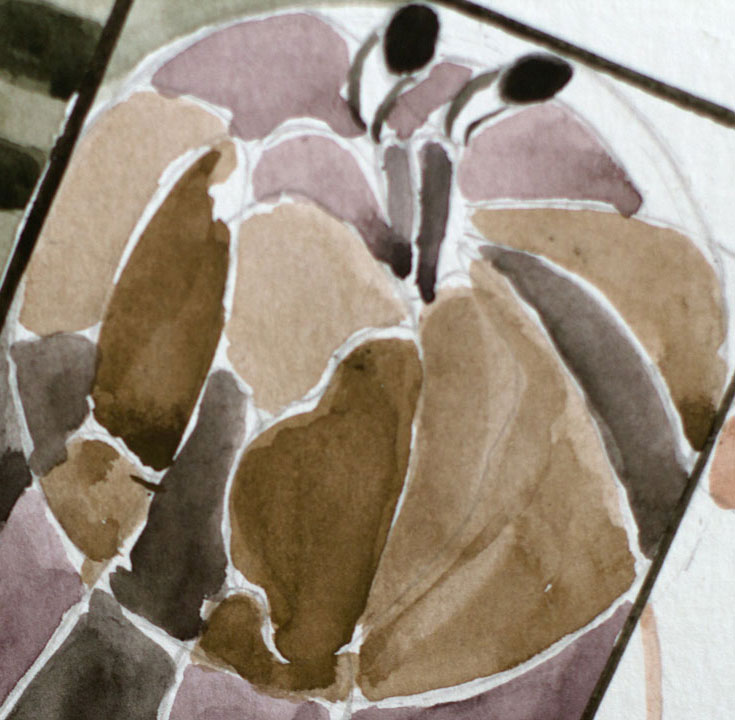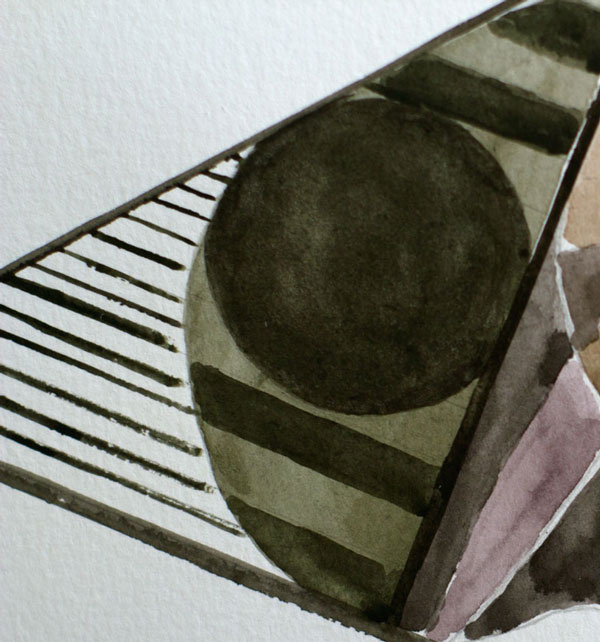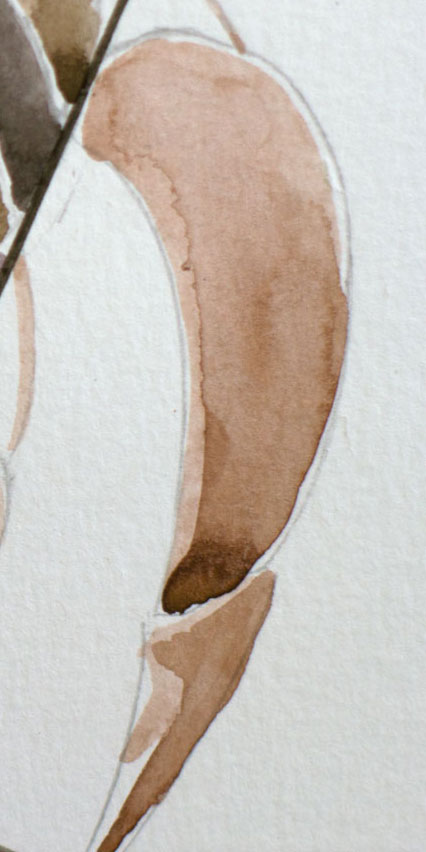The geometric composition in the figure of crustaceans
In the animal kingdom there is a species belonging to the family of arthropods – which are invertebrate animals that consist of appendages and a shell – called crustaceans. These are animals with an exoskeleton and several pairs of jointed legs. This publication seeks to explain the geometric construction of the “crustaceans” series. For this we take as reference the common crab and the hermit crab, two species that facilitate the geometric work that will be explained below.
Conceptual analysis of the “Crustaceans” series
Crustacean no.1
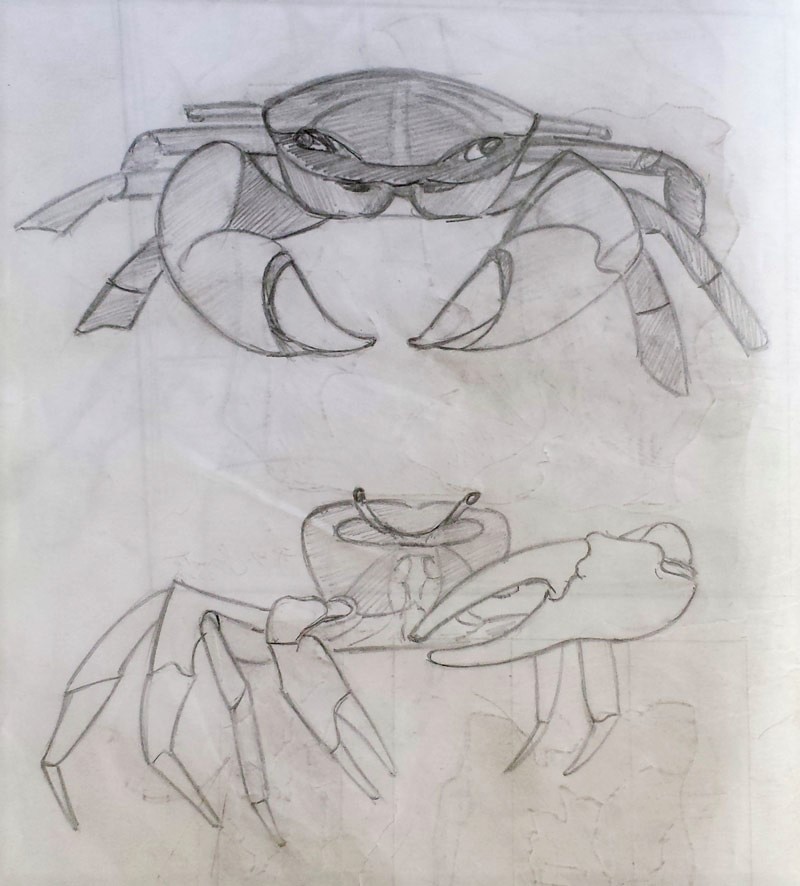
Initial phase
preliminary drawing with sketches of the general idea to be composed in geometric shapes.
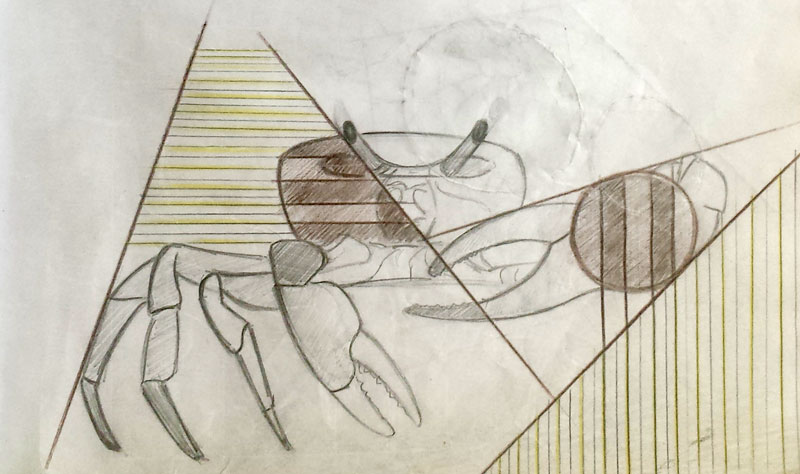
Geometric construction
Using tangential lines, succession of lines and circumferences I have composed the figure of the crab between geometric shapes.
Tones and textures
I used successions of lines in different thicknesses to create a visual texture that together with the violet, ocher and brown tones give harmony to the whole (apart from the fact that the natural texture provided by the watercolor is unmatched between the plastic paint media).
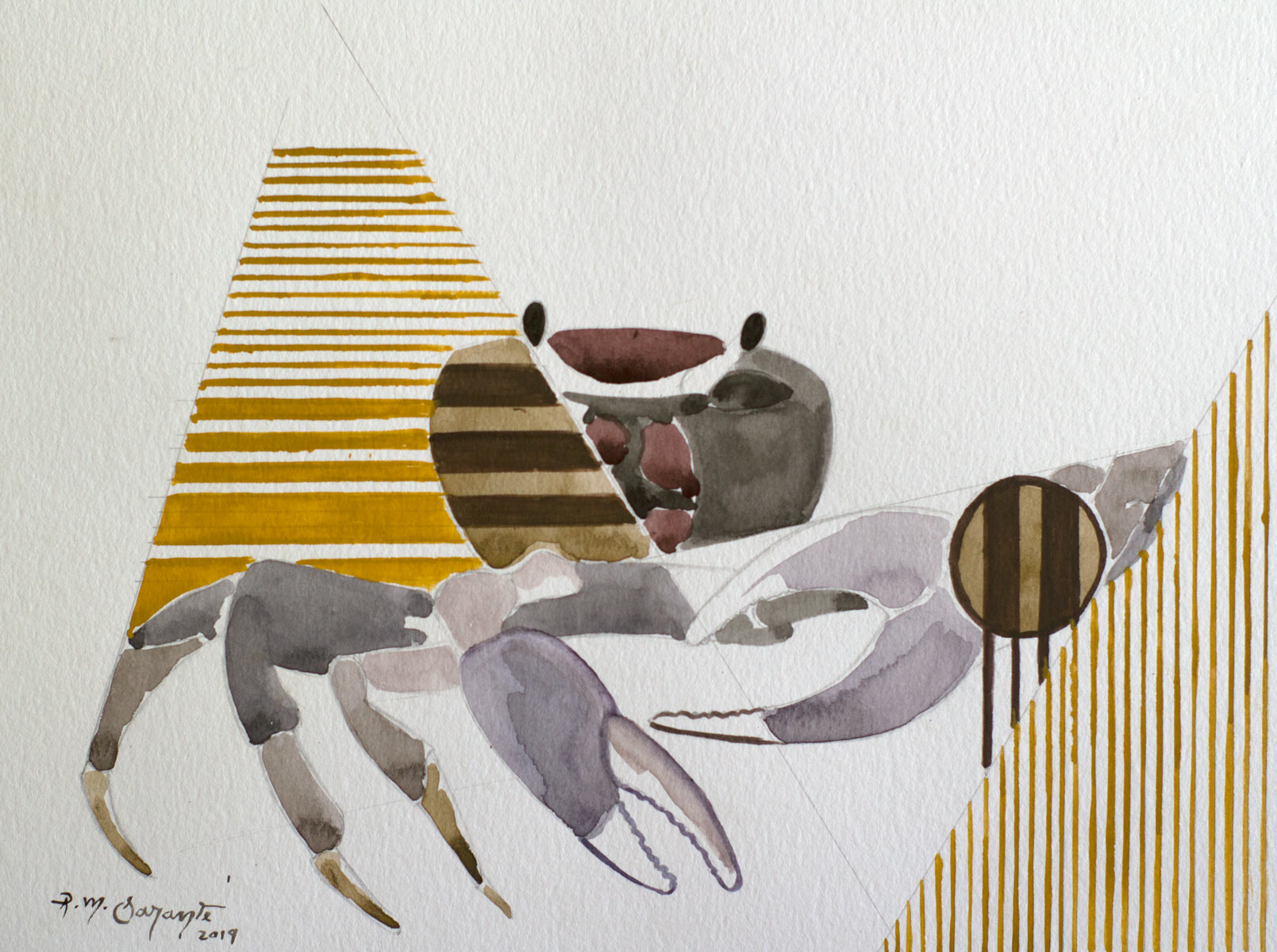
Result
The finish is harmonic, with compositional lines that enrich the shape. In this particular case of the crustacean series (crustacean no.1), the successions of horizontal and vertical lines predominate more than in the other works of the same series, although without taking preponderance of the crab animal figure within the set of elements.
Crustacean no.2

Initial phase
Preliminary drawing of the hermit crab. From this outline we will work with the geometric elements that will shape the work that we will see next.
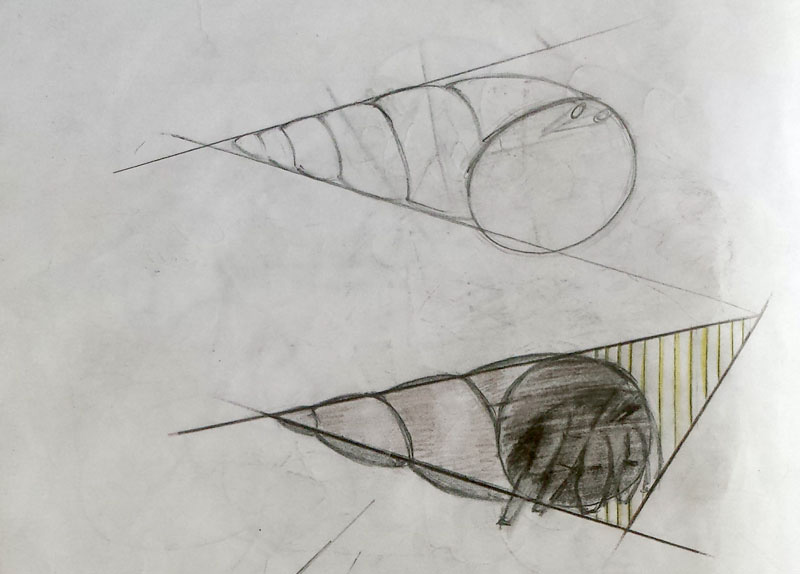
Geometric construction
The general shape of the crustacean has allowed me to achieve a triangular composition, making use of tangential lines and circumferences that harmonize quite well with the figure of the hermit crab. Similarly, sequences of vertical lines are incorporated to give character to the textures.
Tones and texture
By incorporating watercolor, textures are strengthened and each portion of the work as a whole acquires its own hue. The clearings on the paper (unpainted areas) equally reinforce the composition and structure the shape.
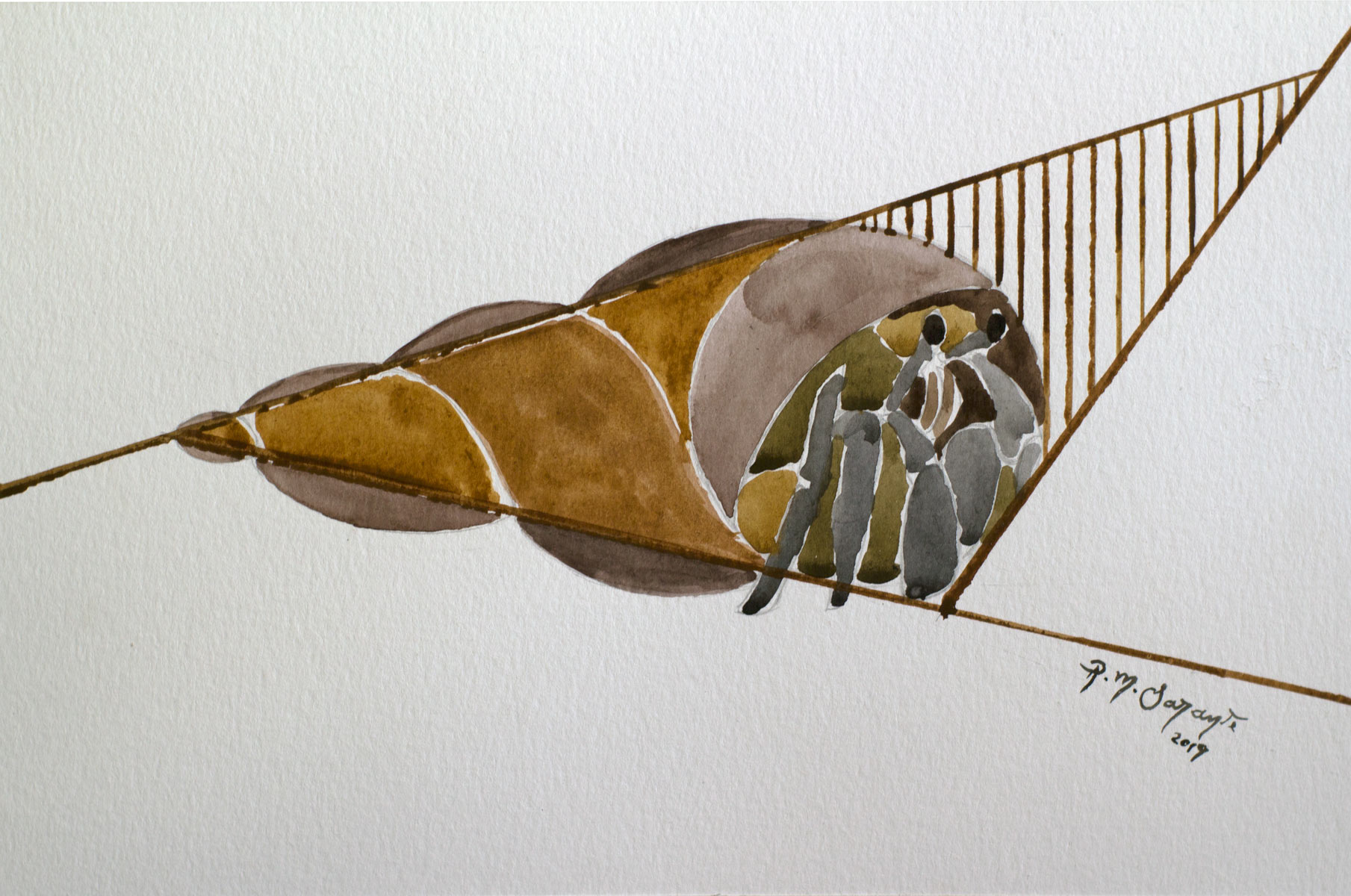
Result
The result is a dynamic work of triangular compilation and asymmetry of form. Like the result of the work explained above, the harmony of earthy colors and complementary tones is perceived.
Crustacean no.3
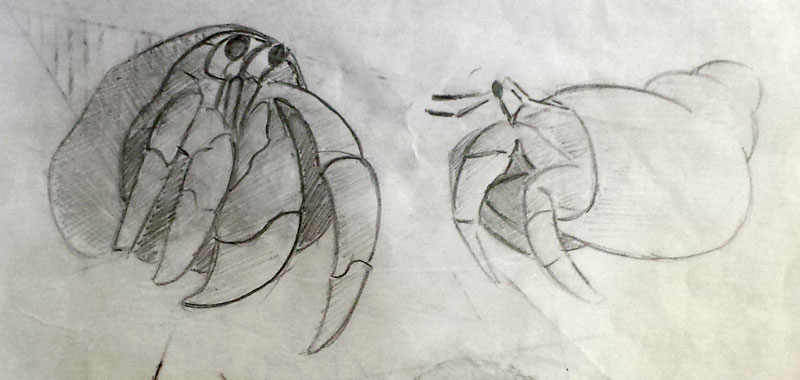
Initial phase
Drawing in front view and profile of the hermit crab, which will serve to decompose the figure into its essential geometric shapes.
Geometric construction
In this case, we chose to make use of the geometric shape of the rectangle, as a guideline for the circumferences that make up the work. It is also important the drawing that form a triangular axis, which brings dynamism to the whole.
Tones and textures
As can be seen in the images section, more contrasting tones appear with the incursion of the green color. For the rest, the previous approach is followed in the use of violet tones and the goodness in textures offered by watercolor.
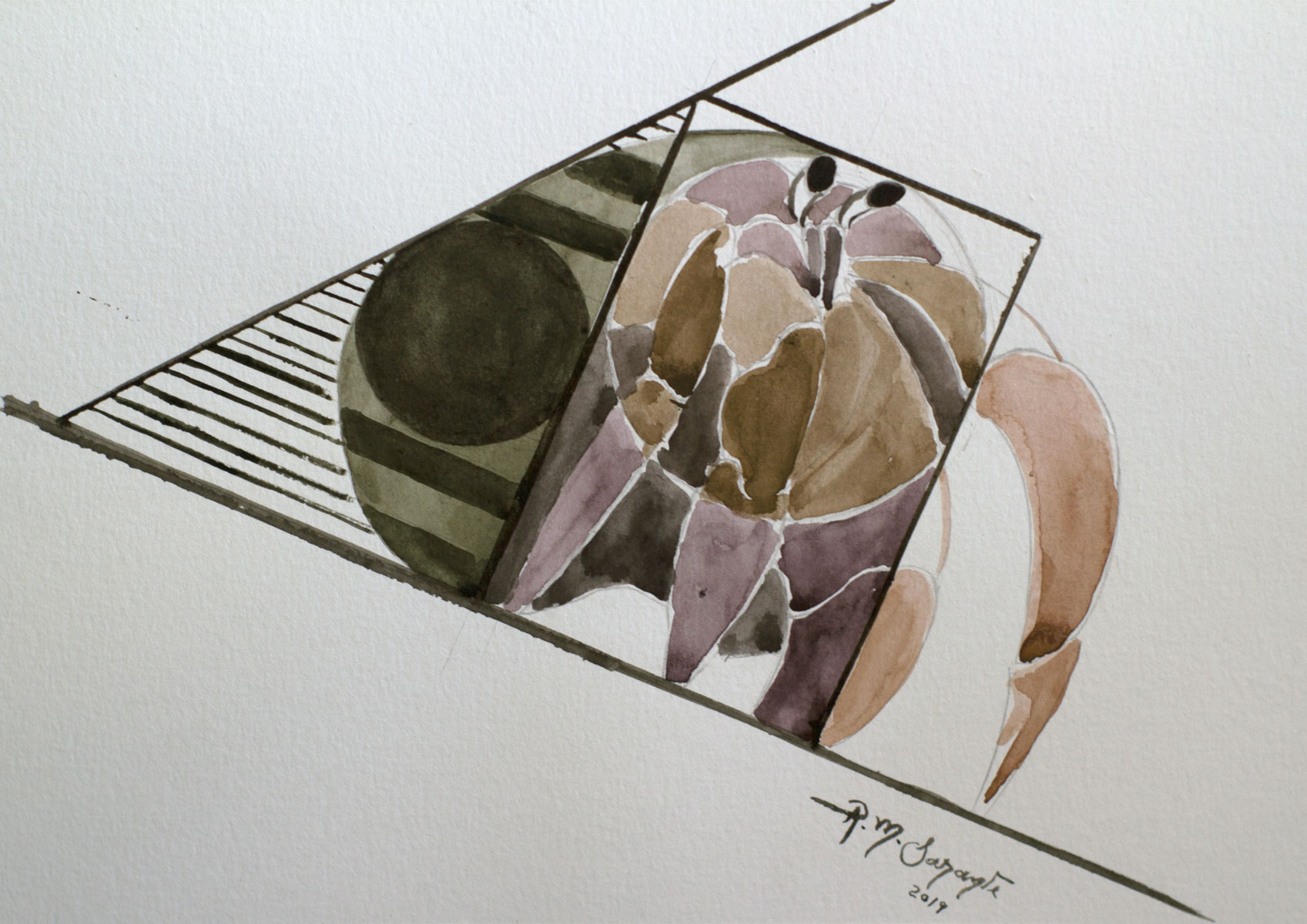
Result
The geometric construction of the work has allowed to obtain a result, in which the separation of tones by plane segments reinforce the composition and visual contrast.

